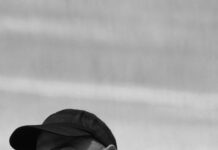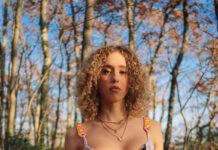Your performances are connected to the composition technique musique concrète. How did you get to know Pierre Schaeffer’s concept and the pioneering works in the context of sampling and remixing?
I have always been interested in sonic art and the application of philosophical concepts into sound. I started being interested in this kind of approaches by following the work of artists such as Throbbing Gristle, Nurse With Wound, Coil and so forth. It was a very logical progression from there to the works of Luc Ferrari, Pierre Schaeffer, Janni Christou and so many more. The universe that all these pioneers created has silently infiltrated many sonic areas, from psychedelia to hip hop. It would be a mistake to pass it by in any way. They managed to break through a hermetic system in a very revolutionary way, and suggested a new form of listening by acting as a trojan horse to the grumpy and limited academism of their contemporaries. I myself have worked with field recordings a lot, but I still do but in a different way. My background is in free improvisation, I have had really immersive experiences while playing with other people and in environments like these, the work of these electronic pioneers is on the agenda.
Why do you prefer this concept to programming and tracking?
To begin with, I find it very interesting and challenging to blend different time signatures, rhythms, loops, samples, and other disperse elements such as voices and field recordings into creating something entirely new that could be played on a festival like any other act. My approach is compositional more than anything. I want my compositions to enclose the element of surprise, to have melodies, harmonies, intervals, and odd chord progressions. The modus operandi that I use when I work also allows me to focus on the diffusion and the space created between sounds. I focus a lot on the construction of effects, maybe even more so than I care about the sound itself.
Stream: Leslie Winer and Jay Glass Dubs – YMFEES
Jay Glass Dubs could count as an approach to rewrite the history of dub.
What I am referring to is a counterfactual approach. A quasi-reality where dub is something entirely different but has originated from the same creative starting point, just on a reversed history timeline. The concept is very much influenced by the ”counterfactual conditional” and paradigms of philosophers such as [American philosopher] Roderick Chisholm and Steve Goodman [alias Hyperdub founder Kode9] blended with comic book scenarios about parallel universes and, of course, my own vivid fantasy. I have a huge respect to people who actually wrote this sonic history, and this respect is reflected in my work. I try not to imitate or re-appropriate anyone. I use elements that are within my reach and try to channel experiences that are my own. I never thought that if I lived in Kingston, Bristol or Cologne I would be able to make the same kind of music. This is what dub would be if it had emerged from Athens and created by a very specific person – me.
Has there always been a theoretical approach to your musical production that has priority to a certain extent that precede the practical translation of it?
I have been working with sound and music for the past 15 years more or less and through that timeline I have indulged in different territories, from rock music to grime and from folk to subtractive synthesis. I have been always interested in how a theoretical concept would work and be translated in to a sonic output. The discovery of Eno’s Oblique Strategies, the concepts of KLF and Iannis Xenakis for example have had an influence on how I initially approach my productions. Having an axis around which I am going to develop an idea is vital to my process. The practical translation might or might not carry within it that initial approach, I don’t necessarily need to make these concepts clear to the audience, I prefer sometimes that there is an ”inside joke” between me and my music or the labels I work with to be revealed when the time is right.





